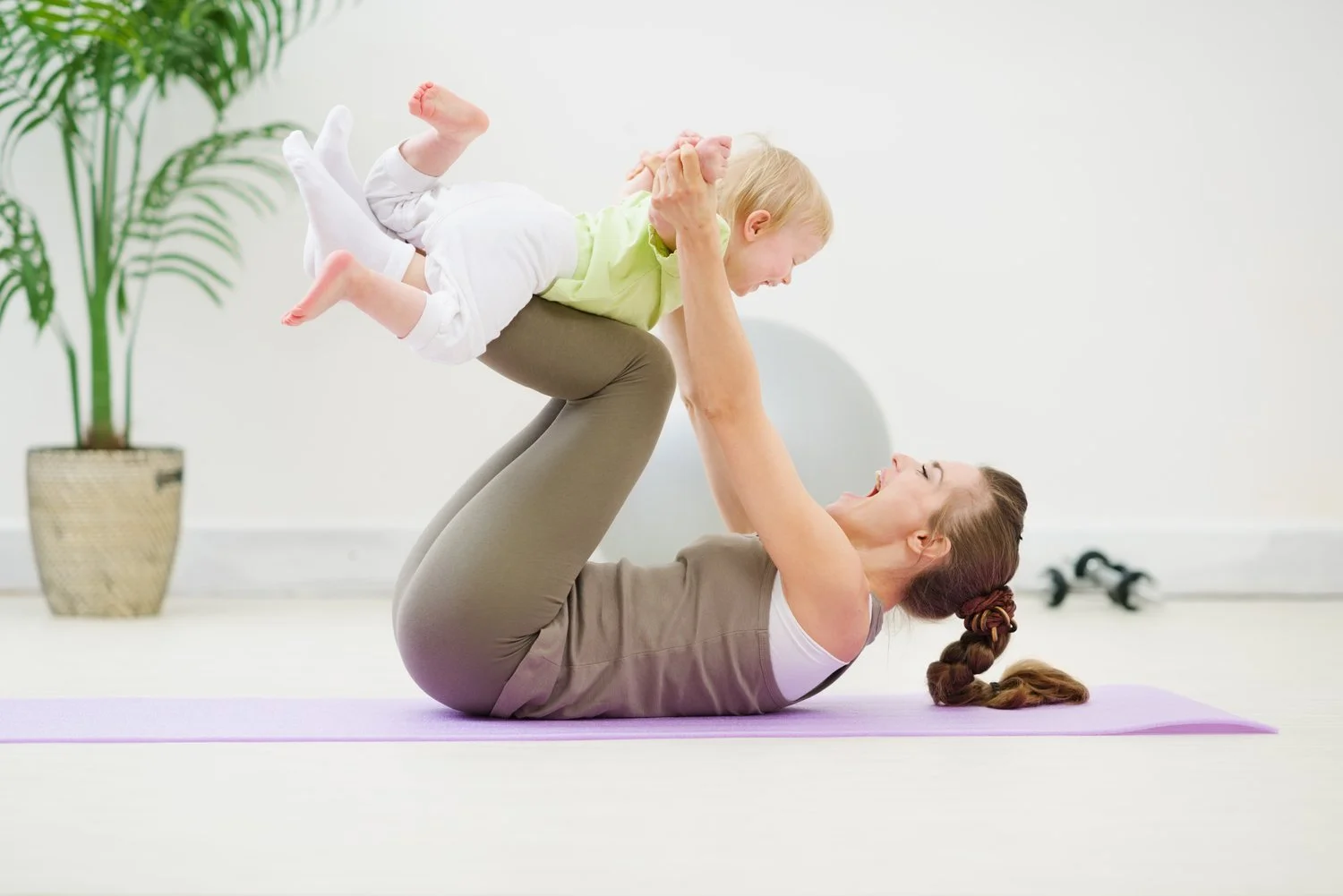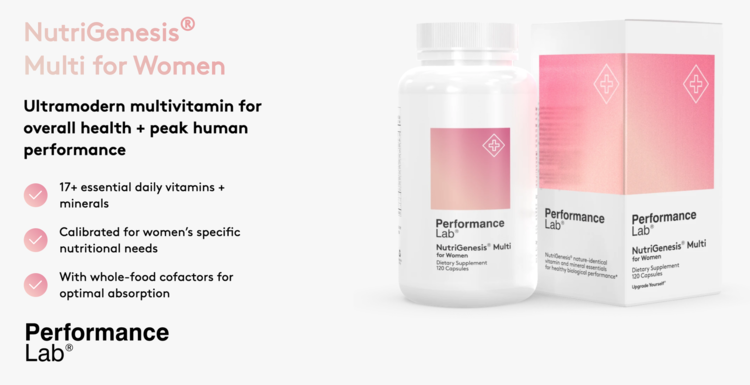Postpartum Exercise - Tips to get you going
By: Chelsea Ebner
Hey there sweet little momma, yes you!
After months of your body stretching, growing, and shifting to make room for that sweet little bundle of joy in your tummy, the big day has come! You have finally welcomed that precious baby into the world. You’re excited to get back home and start life with your growing family, and anxious to get your pre-pregnancy body back. As a fitness professional and a mother of two little ones, I’ve been there. I know how overwhelmed and exhausted you probably are. I also know how real and heavy mommy guilt can be. I promise you the chores can wait. Carving out some time for yourself is so important both for your physical and mental health. Let’s keep it simple and break it down into easy and practical bite-size steps to get you on your way back to feeling better than ever before.
It’s a Marathon, not a Sprint
Be realistic with your timeline. You must allow at least the length of your pregnancy to reach your fitness goals. Try not to get caught up in the number on the scale. It’s okay to have a number in mind but it’s healthier to focus on inches lost, how your clothes fit, and how great you feel. Thinking too far ahead can be daunting so break down your bigger goal into smaller and more realistic milestones and then reward yourself every time you hit one!
Most women experience increased flexibility during pregnancy. Those joints and ligaments will still be loose for the first few weeks which means there’s a greater risk of injury. Generally speaking, most women get the “okay” to resume workouts and strenuous physical activity 6 weeks postpartum. If you are a woman who was very active before and throughout your pregnancy, you may be ready before that six-week mark. It is very important that you consult with your doctor before starting any type of exercise.
Guidelines to follow after consulting your physician
If you have not yet stopped bleeding, then you are not ready to begin exercising. If vaginal bleeding has stopped but begins again after exercise, stop immediately, and consult your physician.
If you are nursing and your milk production slows down after resuming exercise, then you may need to scale back on your workouts, or possibly even stop altogether until your milk supply has returned to a healthy/normal level.
Make sure that you are eating and drinking enough. (Studies have shown that most women who maintain a diet of 1800-2200 calories per day have a healthier milk supply than those who are more restrictive with their intake).
If after you resume your workouts, you experience any physical pain that isn’t related to the workout or muscle soreness, then less intense exercise or modification may be required.
Trust and listen to your body. It will let you know if something isn’t right.
Important Note: As tempting as it might seem, now is not the time to start drastically cutting calories or to embark upon some crazy fad diet. Instead: focus on eating real whole nutritious food. Go natural and organic and avoid processed foods when possible. Also, don’t forget to drink plenty of water, even more so if you are nursing!
Exercise time
You’re itching to get your first workout in but you may find that you get frustrated at just how easily you lose your breath or how difficult a once easy exercise seems. Take a deep breath, you can do this!
If you’re not quite ready to make your way back into the gym, don’t panic. Do some easy Tabata-style workouts or a quick 15-20 minute circuit with either light weights or bodyweight. Think quick and efficient. Squeeze in workouts during nap times, or have baby do some tummy time and you can work out together. If you are feeling adventurous, do a baby-wearing exercise. Your little one will probably love it and it means you have a little added resistance.
Listen to your body and stay consistent. Keep moving, keep coming back and you will get stronger and faster. For every awkward frustrating workout you do, you are one step closer to getting back to your pre-pregnancy shape.
“I will never forget how frustrating my first run post baby was. It was slow, my legs felt like sandbags, and I was feeling more jiggle than I was comfortable with. However, I pressed on and felt myself getting stronger with each workout. I had to be okay with feeling a little uncomfortable and insecure in the beginning to allow myself the chance to reach my goals.”
Tips
Avoid crunches in the early stages. Most women’s abdominal wall will have some degree of separation or diastasis. For most women, it will close but for some, the separation stays, resulting in a tummy that still looks a little pregnant. Crunching can make it worse.
*You can test to see if you have diastasis recti by:
1. Lying on your back and placing your fingers above your belly button.
2. Press down with your fingers and raise your head, neck, and shoulders like you are doing a crunch.
3. If you have a gap width of three or more fingers then you may have diastasis recti. If you feel you do, consult with your physician.
Alternative Abdominal Crunchless Exercises
Dumbbell side bend, side planks, weighted or bodyweight glute bridge, knee drops/windshield wipers, wall sits, superman on the floor.
AVOID: crunches, reverse leg lowers, oblique twists, frontal planks, or Pilates 100’s.
Try my postpartum sample workout
For the first 2 workouts, set your timer for 20 MIN and try and get as many reps in as possible. You can add a 30-second rest in between sets as needed. Starting off, if you can do one of these and a 30-minute walk 2-3 times a week you are off to a fantastic start!
Beginner Circuit
Start off by using your body weight, when you feel you’re ready you can incorporate weights.
30 seconds of marching high knees (as the knee comes up, extend the opposite arm upward reaching overhead)
25 Squats
25 Twisting Knee Thrusters
30 step-ups on a stable elevated surface seconds
25 Twisting Knee Thrusters * opposite leg*
25 Calf Raises
20 Kick Through Lunges ( 20 each leg)
30-second football / lateral shuffle
Baby Wearing Workout
Get through as many reps as possible in 20 minutes!
20 Squats
20 Walking Lunges
20 Wall Pushups
20 Alternating Backwards Stepping Lunges
20 Tricep Chair Dips
1-2 Minute Step-Ups on a stable elevated surface ( ex. Bench, coffee table, heavy chair)
Crunchless Core Workout
Complete 2 sets. Rest 15-30 seconds in between exercises.
30 Second Wall Sit
30 Seconds Wall Pushup
15 Dumbbell Side Bend (on each side)
60 seconds Weighted Glute Bridge
20 Second Side Plank - (Modified Option: Lower bottom leg to the floor; Advanced Option: Side plank with a dip, either body or light dumbbell rested on hip)
10 Windshield Wipers
Just in case you need this little reminder; you are superwoman. You should be proud of every workout and healthy choice you make, and the example you are setting to your family and those around you. The beautiful and difficult thing that your body has done, carrying and delivering your sweet baby, is proof that you can do hard things! Never ever underestimate how strong you are; you’ve got this!
For more great articles on health and fitness, check out the ebylife blog, or for a tailor-made diet and workout plan, check out ebylife


